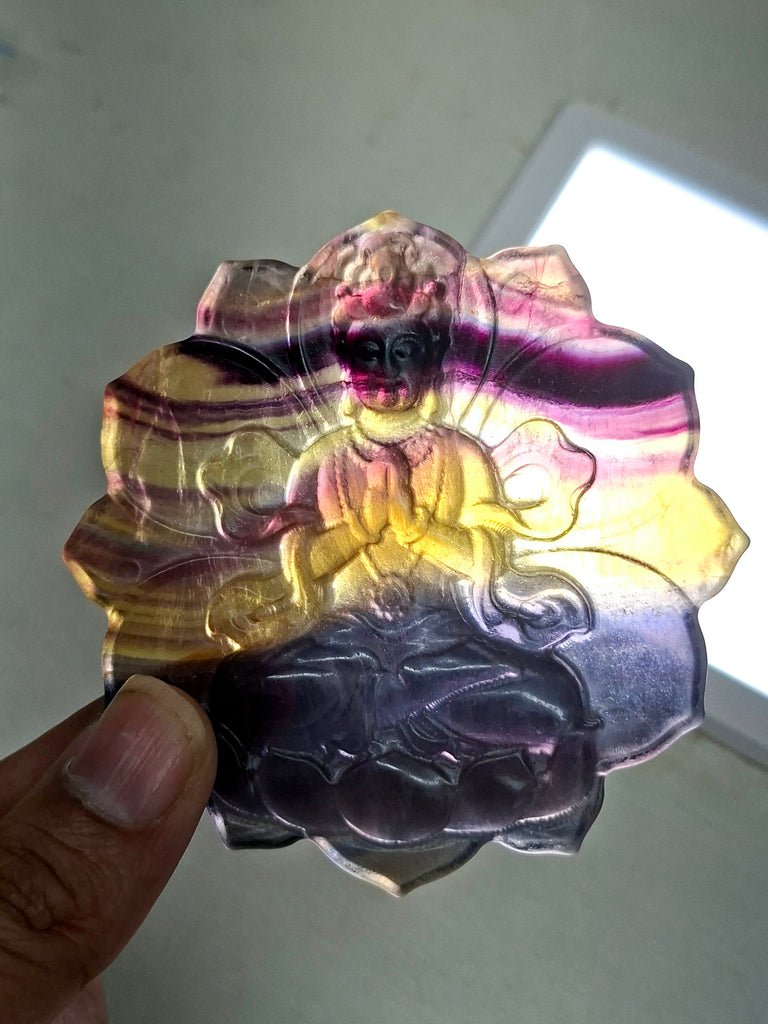Gemstones are made for human beings; they help and heal us from stress to success. Used since ancient times, their benefits continue to grow each day, promoting physical, emotional, and spiritual well-being. Based on the principles of energy and planetary correspondences, gemstones channel powerful vibrations that align with our inner energy.
Precious gemstones like Ruby, Sapphire, and Emerald are known to attract wealth, fame, and success. Yet, even semi-precious gemstones work beautifully for those who seek balance, confidence, and calm without spending much. Whether worn as jewelry or kept as decorative crystals, these gems radiate positive energy, dissolve negativity, and bring harmony into life. Truly, gemstones are nature’s timeless gift for healing, prosperity, and peace.
But from all this humans are very greedy and this affects our Mother Earth deeply. Continuous mining and high demand for gemstones cause severe environmental damage. In regions where gemstones are found, people often face poverty, exploitation and ecological imbalance this we discuss in this blog.

Ametrine is one of the very beautiful gemstones, and in Shwasam Crystals, our Ametrine Lotus Floral Carved Oval Shape Gemstone for pendant or jewelry making is one of the best-selling products. This enchanting gem combines the golden hues of citrine and the violet sparkle of amethyst, creating a natural harmony that symbolizes balance between material and spiritual realms.
However, beyond its beauty, the gemstone world raises deeper questions about morality, environmental impact, and social responsibility. While semi-precious stones like Ametrine often come from small-scale, low-impact sources that do little harm to the environment, precious gemstone mining such as diamond, ruby, emerald, or sapphire extraction is resource-intensive and environmentally damaging. These operations often enrich a few while burdening local communities with pollution, health hazards, and eroded living conditions.
Six key problems of gemstone mining faced by ordinary people, delves into the concept of mining morality, examines whether ethical gemstone sourcing is truly possible, and concludes with guidance on how we can cherish gemstones like Ametrine while also protecting our Earth.
Problems of Mining that Affect Common People
1. Destruction of Natural Ecosystems
The first and most visible problem caused by gemstone mining is habitat destruction. Mining often involves clearing large areas of forest, causing biodiversity loss and irreversible landscape damage. Forests that once hosted hundreds of plant and animal species become barren pits or lifeless terrains, reducing carbon absorption and worsening climate change. Ordinary people, especially those dependent on forests for food and fuel, lose their ecological security. Displaced wildlife often moves toward human settlements, creating further conflicts and ecological imbalance.
2. Water Pollution and Shortage
Mining sites frequently contaminate nearby rivers and ponds with heavy metals, mercury, cyanide, and tailings residual waste from the extraction process. These pollutants make local water unsafe for drinking, cooking, or irrigation. Villagers near mines may experience chronic illnesses from consuming or bathing in toxic water. Fishing communities find aquatic ecosystems depleted, while farmers face reduced soil fertility due to poisoned irrigation water. Thus, mining degrades both the quality and availability of one of Earth’s most fundamental resources.
3. Air Pollution and Respiratory Illnesses
Gemstone extraction and processing release dust, smoke, and exhaust gases. Toxic fumes from chemical treatment enter the atmosphere, degrading air quality. The local poor, who cannot afford air purifiers or alternate housing, breathe this pollution daily. Prolonged exposure leads to respiratory diseases like asthma, skin irritation, and even long-term organ damage. Children and elderly people living near mines are particularly at risk.
4. Soil Erosion and Land Degradation
Large-scale mining excavations disturb land stability, leading to massive soil erosion and landslides. Fertile topsoil the very skin of the earth is lost forever, turning fields into barren wastelands incapable of supporting crops. For farmers, this directly translates to lost livelihoods and food insecurity. In addition, groundwater recharge reduces, worsening drought conditions. Abandoned mining sites remain hazardous and infertile for decades.
5. Exploitation and Income Inequality
The gemstone trade, though luxurious on the surface, is built upon the exploitation of poor miners who earn meager wages compared to the immense profits reaped by global jewelry corporations. While landowners and exporters accumulate wealth, ordinary miners endure unsafe conditions, irregular pay, and no medical or social security. Local economies often experience inflation from the boom, but the money does not stay in the community it flows upward. As a result, mining widens the economic gap between the rich and the poor.
6. Health Hazards and Life Expectancy Decline
Mining morality is not only an environmental but also a human health crisis. Workers in unregulated mines are exposed to mercury, dust particles, and machinery hazards that cause fatal injuries or diseases like silicosis and mercury poisoning. The toxic air and chemically polluted water also shorten the life expectancy of entire communities. Families often face generational poverty and health problems, trapping them in cycles of suffering that persist long after mining operations close.
Understanding Mining Morality
Mining morality refers to the ethical responsibility and moral boundaries involved in extracting Earth’s non-renewable resources. It raises questions such as: How much environmental sacrifice is justified for economic gain? Should luxury commodities like gemstones cost the planet’s health? In essence, mining morality demands that we acknowledge every gem’s hidden cost its “ethical footprint.”
An ethical approach to mining would ensure transparency, fairness, and ecological respect throughout the gemstone’s journey from the Earth’s crust to the jewelry box. However, the global gemstone industry often hides behind glittering marketing, masking the environmental and social toll of mining. To make mining moral means recognizing miners as humans, not merely tools; and the Earth as a living system, not a commodity.
True mining morality includes:
- Protecting human rights of workers.
- Ensuring restoration of mined lands.
- Preventing chemical pollution.
- Equitable profit sharing.
- Respecting indigenous and local communities.
- Maintaining full transparency in the gemstone’s supply chain.
Is Ethical Gemstone Sourcing Possible?
While total purity may be difficult, ethical gemstone sourcing is absolutely possible and increasingly necessary. It relies on three fundamental pillars: ecological sustainability, fair labor, and transparent traceability.
- Traceability: Every gemstone should be traceable to its source mine. The buyer should know where, how, and by whom it was mined. Certification systems and blockchain-based tracking help ensure transparency and trust.
- Fair Labor Practices: Miners should receive fair wages, proper safety gear, and healthcare. Ethical sourcing gives control back to small-scale mining communities, ensuring the benefits reach the people who work closest to the earth.
- Sustainable Mining Methods: Ethical mining avoids deforestation, minimizes chemical use, and implements land rehabilitation after extraction. Eco-friendly mining technologies like water recycling, terraced excavation, and reduced blasting are progressively being adopted in responsible mines.
Moreover, lab-grown gemstones and re-cutting old gems provide sustainable alternatives. Lab created Ametrine, for example, has the same composition and beauty as natural Ametrine but avoids environmental destruction entirely.
How Gemstone Mining Affects Our Earth
The Earth bears deep scars from centuries of resource extraction. Gemstone mining, though smaller in scale than coal or metal mining, still fragments landscapes, alters soil composition, and changes the natural water flow. Dust clouds from open pits disrupt photosynthesis in nearby vegetation, reducing carbon capture. The loss of trees and topsoil weakens natural defenses against floods and droughts.
Economically, mining may enrich a country in the short term but socially, it often displaces communities, erodes cultural identities, and leaves ghost towns once the gemstones are exhausted. The true cost is paid in silence by the planet, its animals, and the poorest people whose health and heritage vanish for profits they seldom see.
Restoring Integrity: Healing the Earth and the Gem Industry
To heal both our Earth and the gemstone industry, we must adopt restorative and regenerative practices. The first step is acknowledgment: that mining wounds the Earth, and conscious humans must help her heal. Here are essential ways to restore planetary and ethical integrity:
- Land and Habitat Reclamation
After mining, ecosystems can be rehabilitated by replanting native vegetation, stabilizing soil, and reconstructing lost habitat corridors. This process, called reclamation, revives biodiversity, prevents erosion, and reconnects nature’s cycles. - Water and Soil Remediation
Using bioremediation where plants and microorganisms remove toxins from soil and water helps reclaim polluted sites. Treating acid mine drainage and restoring natural water channels protect aquatic ecosystems and stabilize local livelihoods. - Community Participation
Local communities should spearhead the healing process. Sustainable programs that invest in education, healthcare, and eco-tourism offer long-term alternatives to destructive mining. Enabling communities to manage their resources ethically helps break dependence on exploitative industries. - Support Transparent Brands
Consumers hold great power. Purchasing gemstones from verified ethical brands that provide sourcing information discourages illegal or environmentally harmful mining. By supporting brands that work with fair-trade gemstone cooperatives, we shift demand toward accountability. - Circular Economy in Gemstones
Reusing, recycling, or re-cutting old gemstones minimizes new mining needs. Many gems, like Ametrine or Amethyst, can be re-polished or set into new jewelry, preserving both their historic charm and environmental integrity.

How We Can Help: Practices for Ethical Living with Gemstones
Gemstones hold deep spiritual, aesthetic, and healing significance. Loving them also means taking care of the Earth from which they come. Here are some conscious care tips to help both gemstones and Earth live longer:
- Buy Mindfully: Choose ethically sourced or lab-grown gems. Ask sellers about origin and labor conditions before purchasing.
- Avoid Over-Mining Demand: Appreciate gemstones for their uniqueness. Don’t buy excessively or hoard multiple similar stones.
- Opt for Recycled Metal Settings: Use gold or silver that comes from recycled sources instead of freshly mined metal.
- Use Eco-Friendly Storage: Store gemstones in natural cloth pouches or recycled containers rather than synthetic plastic boxes.
- Spiritual Cleansing over Chemical Cleaning: Clean gemstones gently with mild soap and water rather than harsh chemical cleaners that pollute drains.
- Replant Trees and Conserve Energy: For every gemstone purchased, plant a tree or support a local green initiative to compensate for mining’s carbon footprint.
- Educate and Inspire: Share awareness about gemstone ethics. When buying or gifting gems, include a message that encourages responsible use.

A Philosophy of Harmony: Gemstones and Earth as One
The beauty of Ametrine lies in its duality balancing two contrasting energies into one harmonious crystal. Similarly, the relationship between humans and Earth must evolve toward harmony, not exploitation. The real value of a gemstone does not lie in its price but in how consciously it was obtained. Mining need not end, but it must transform from greed-driven extraction to balance-driven co-existence.

From wisdom to improving communication and building confidence, Emerald gemstone is very helpful. But not only Emerald Ruby also supports these qualities. This gemstone is associated with improved thinking abilities and enhanced communication skills, making it ideal for leaders, teachers, and those in creative fields. In the semi-precious category, Citrine, Clear Quartz, and Larimar gemstones also promote clarity, confidence, and positivity. However, when using these gemstones, care and intention are essential. Always handle them with clean hands and a pure mindset. Touch your gemstone with respect and focus on positive manifestation, as your intention energizes the stone. Regular cleansing and mindful connection strengthen the bond between you and your gemstone, allowing its healing vibrations to remain powerful for a long time and bringing balance, peace, and success into your life.
If you like this blog and find anything informative, please write to us, and for shopping our latest collection visit Shwasam Crystals.
 USD
USD EUR
EUR
 AUD
AUD
 GBP
GBP
 INR
INR


